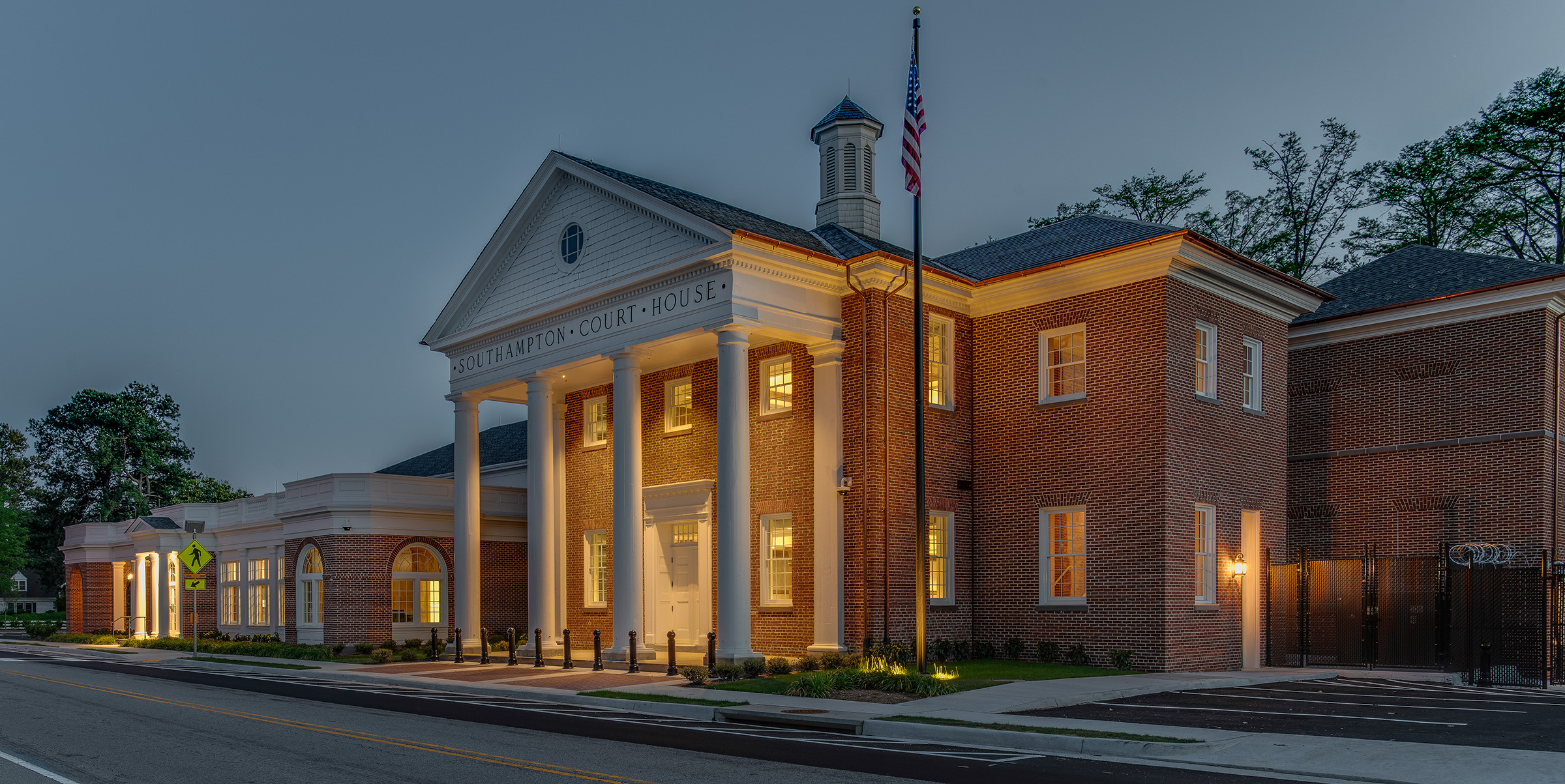Southampton County Courthouse
Photos Credit: Charles Buffington
Other Southampton County Courthouse Photos | 1 | 2 | 3
By Andrew Moore
Each of Virginia’s 95 counties boasts at least one property listed on the National Register of Historic Places. Although this fact isn’t too surprising, given the Commonwealth’s extensive history, it’s still notable. Many of the structures on the National Register and Virginia’s Landmarks Register are owned and operated by county governments.
Managing historic municipal facilities is a challenge every county in Virginia has faced. Some of these historic structures may seem far too outdated for our modern society, but in fact the buildings offer incredible opportunities for counties to honor their rich history while modernizing them to serve citizens today.
As counties across Virginia consider how to manage, renovate, and reimagine historic municipal buildings, they would be wise to follow three key principles.
Prioritize the Feasibility Study
When renovating a historic municipal structure, a feasibility study is paramount. The study can’t just be something that sits on a shelf; it should be detailed and actionable. Effective feasibility studies should include five components: (1) A clear set of goals and access to the right stakeholders so they are free to share their goals. (2) A plan for public engagement. (3) Detailed research of the structure and its defining characteristics. Additionally, it’s often helpful to produce a Historic Structure Report (HSR), which identifies the significance of the extant historical fabric, along with a narrative of the changes over time. This report can be a useful tool to engage with stakeholders as part of comprehensive due diligence. (4) High quality design principles that can be applied to the project. (5) Realistic costs and timelines, including the need for contingencies.
Prioritizing this study early is critical because it can help to better frame a project or reveal the need to pivot from an initial approach. In Charlotte County, an exhaustive feasibility study was conducted to research the potential to repurpose, adapt, modify, and expand the existing courthouse and adjacent General District Clerk’s office. The result of the study was to pivot from the initial plan and build a new courthouse that was connected to the existing Circuit Court Clerk’s office. This approach met the county’s goals while enhancing the historic context of its civic center.
Engage Key Constituencies
Generating buy-in for historic renovation or rehabilitation should start early in the planning process. First, consider who uses the building and their needs. Second, have clear and frank conversations with key decision makers. As outlined in a feasibility plan, have a strategy to meet citizens where they are and cultivate their support. For example, consider working sessions with stakeholders to explore design options in a workshop setting. Engagement shouldn’t end once shovels hit the ground; rather, consistent communication with your constituencies must continue until a project is fully complete.
Plan for the Unexpected
Historic structures require additional care and working with experts who have experience renovating, expanding, and rehabilitating buildings that are more than a century old. Their perspective is invaluable because surprises are inevitable. The adaptive reuse, historic renovation, and expansion of the courthouse complex in Southampton County offers a good example. During the excavation for the basement level of the new addition, the contractor encountered the original foundation of the 19th century courthouse, which revealed the curved apse style of the original design. Although this was interesting from a historical and archeological perspective, the ancient brickwork was not stable and required some unexpected retroactive foundation design to support the existing building. Another common discovery for historic structures, which was the case in Southampton, is that the existing building’s components are not true, square, or level, despite assumptions to the contrary. This results in on-the-fly redesign or creative accommodations. Working with historic structures requires flexibility and a willingness to adapt.
Benefits of Historic Renovations
Investing in the renovation and rehabilitation of historic structures has many benefits. Most historic government buildings are located in a county’s civic center and provide tangible cultural and social relevance. The design of these structures evokes confidence, inspiration, and pride. These buildings are physical embodiments of a county’s legacy and should be respected. Furthermore, renovating historic structures could be more cost effective when compared to designing and building a new facility, especially if that proposed facility is located on a greenfield site that lacks critical infrastructure such as water, sewer, and power. Finally, renovating historic structures has less of an environmental impact than building new.
The three principles outlined above will provide a clear path for counties in Virginia to effectively address historic municipal structures and ensure those buildings can continue to serve citizens for years to come.
Andrew Moore AIA, LEED AP BD+C, CDT is a Senior Principal at Glavé & Holmes Architecture in Richmond, VA. As founder and Director of the firm’s Urban Architecture Studio, he seeks to create buildings and places that enhance community life in the public realm. Andrew has worked with counties to reimagine and revitalize historic municipal facilities and complexes. He can be contacted at amoore@glaveandholmes.com.

